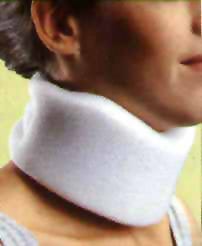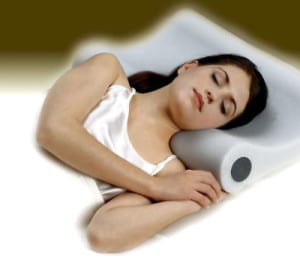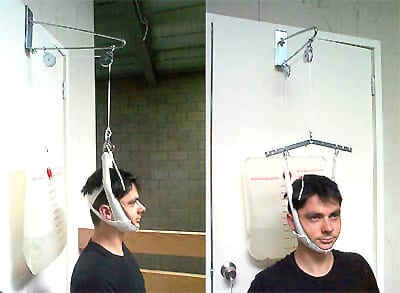Neck Pain

When is it More Than a Pain in the Neck?
Each year, patients in the Greenville, Spartanburg & Anderson areas suffer from episodes of acute or persistent neck and shoulder pain as a result of injury, strain, overuse, or aging. While it is usually self-limited, in order to prevent possible permanent damage, if it persists for more than a couple of days it should not be ignored.
Two Types of Neck Pain
There are two distinct types of cervical neck pain. The first type often involves a dull, achy pain in the neck that may radiate down into the shoulders and arms. There can be burning sensations as well. Sometimes this kind of pain presents in only the arm or hand. Because this type of “pain” is not felt in the neck itself, it is easily misdiagnosed. While this first type of neck pain is the most common and can require concentrated effort to fix it is rarely an emergency.
A second type of neck pain is associated with weakness in specific muscles in the arms or true sensory loss in a well-defined pattern extending down into the hand. This type of neck pain is often caused by a nerve root in the neck being pinched by a herniated (bulging) disk in the spine. Especially if progressive or accompanied by loss of bowel or bladder control, this type of pain can a surgical emergency.
On occasion, the second type of neck pain isn’t experienced as “pain” at all. Numbness or weakness in the arms or legs, difficulty walking, loss of pain or temperature sensation in the hands and arms, poor balance and stiffness in the neck can occur together or in isolation. In this case, there is pressure directly on the spinal cord and an immediate surgical consultation should be obtained.
When Neck Pain Develops From Neck Injuries
We all know that automobile or sports accidents cause neck problems. While the vast majority of injuries involve soft tissue special attention must be paid to those cases where the spinal cord itself becomes injured or even severed, often as a result of broken vertebra. Regardless of the severity of the injury to the spinal cord, the result is often the same: the patient may develop either complete or partial paralysis below the site of the injury. If a vertebra in the neck is broken or cracked, neurosurgeons often have to stabilize the spine by fusion and instrumentation to prevent further injury to the cord.
Between each vertebra, or bone, in the spinal column are disks. The disks have a gel-like center that makes them flexible and allows the spine to bend and move. Because the disks are soft, they can also bulge and become misshapen. When this occurs, there can be pressure on the spinal cord coverings or upon one of the nerves exiting out of the spinal cord toward the arms and upper torso. If the bulge becomes severe, the disk may herniate (like jelly coming out of a donut), enter the spinal canal or cause injury to the nerve roots.
It is especially important to make sure that true motor weakness, numbness, or loss of bowel and bladder control are not present. When absent, as in most cases, there is no surgical emergency. When pain is the primary complaint, up to two-thirds of patients with herniated disks respond to conservative, non-surgical treatment.


Fortunately, severe herniated disk or spinal cord injury is not the most common outcome after an automobile or sports injury. Usually patients experience an acceleration/deceleration or whiplash injury instead. There is no injury to the spinal cord and there may not even be signs of injury to the spine or disk on radiographic or MRI studies. Despite this, people suffering from whiplash often experience neck stiffness, shoulder or arm pain, headache, facial pain, and dizziness.
Tears and strain to the muscles can cause these symptoms and aggressive physical therapy, medication or the simple passing of time can be effective treatments. Many people initially seek help from their primary care physician. However, if symptoms persist after four to six weeks of if these interventions do not work, then nerve root irritation, torn ligament, or mechanical problems should be considered. Seeking the opinion of a specialist is wise.
While bulging and herniating disks can be caused by injuries such as whiplash, stress on the spine by overuse, aging, or arthritis/degeneration in the spine may cause them as well. As a result, someone who had no symptoms prior to an injury but has arthritic changes on x-ray, may be told that their pre-exisiting condition was activated. In the absence of injury, many are told that pain is a natural consequence of aging. This can be very frustrating to the injured party who is still symptomatic.
Degenerative Conditions
The neck is susceptible to osteoarthritis and degenerative disk disease, which is often caused by general wear and tear on the spine. The disks between the vertebrae may begin to lose their flexibility and ability to act as shock absorbers in the spine. Bone spurs also can develop on the vertebrae. In either case, the nerves in the cervical spine can become irritated or pinched, causing pain in either the neck or the arms.
When there is degeneration in the cervical spine, herniated disks can occur, but more commonly there are mechanical problems or muscle and ligament damage. These conditions are often equally painful, and in fact represent a far greater number of cases then disk herniation.

Because the vast majority of patients who have neck pain from all causes eventually get relief without ever having surgery, they are often advised to tough it out. This approach can lead to prolonged, un-necessary suffering. Epidural steroids are often helpful for degenerative disk disease, with and without nerve root impingement or disk herniation. Even in the presence of degenerative disk disease or nerve root impingement ligament-directed injection therapy can both provide dramatic pain relief and help stop progression of disease.





